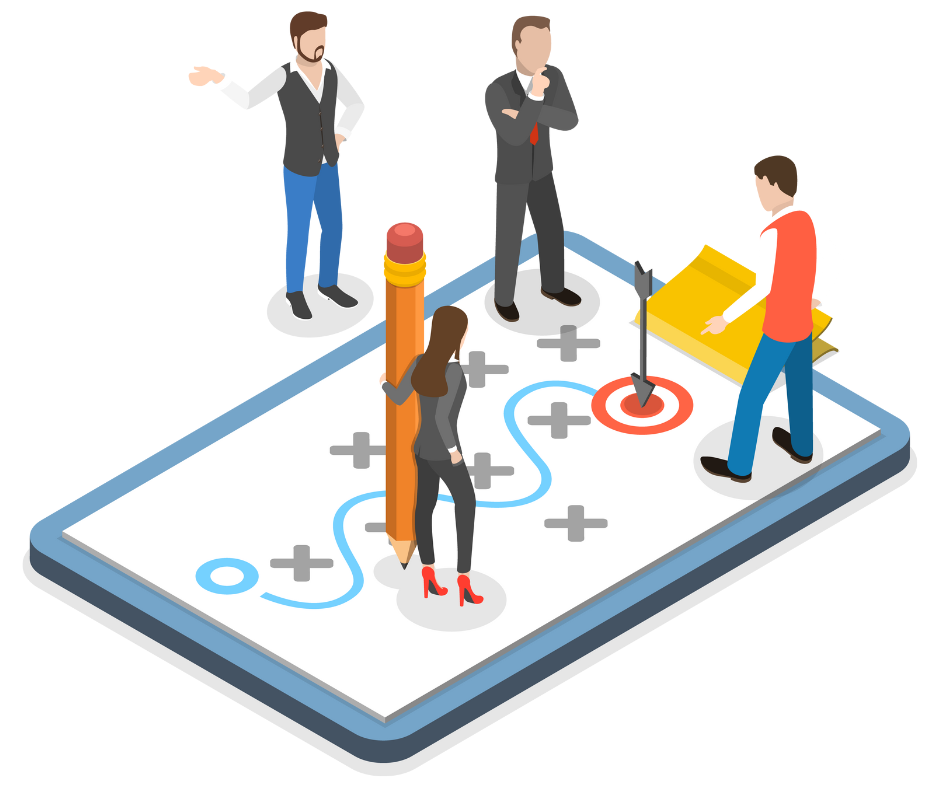Tips on how to draft your accessibility action plan
Robin Christopherson | 07 Nov 2023The AbilityNet Digital Accessibility Maturity Model (DAMM) is a free, open-source tool that helps organisations assess their digital accessibility maturity and develop a plan for improvement. The self-service version of the DAMM provides a comprehensive guide to help you get started, including information on the different stages of the process, the stakeholders to engage, and how to set achievable actions.
By identifying your strengths and areas for improvement in your digital accessibility journey, you can effectively draft an accessibility action plan that propels your organisation towards a future where everyone can seamlessly engage with your digital services and products.
Once you have used the DAMM to assess your organisation's digital accessibility maturity and identify areas for improvement, you can begin planning a roadmap by drafting your accessibility action plan.
What's an accessibility action plan?
Accessibility action plans are documents that outline the steps you need to take to improve the accessibility of your digital products and services. They should be specific, measurable, achievable, relevant, and time bound.
 Example of an accessibility action plan
Example of an accessibility action plan
Let's take the concept of 'vision' as an illustrative example. If your website lacks an accessibility statement, you're currently operating at Level 1, indicating an informal approach to accessibility. To progress to Level 2, a recommended action would be to create an accessibility statement for both your website and app.
This is a simple example.
At times the next step for your particular situation may not be so direct and may involve intermediary steps, which you can write as recommended actions.
You can reach out to stakeholders as you draft the recommendations to ensure they’re realistic and achievable. You may also need to discuss and secure a budget for some actions, such as providing training or new testing tools.
The key is to set achievable short to mid-term goals. These bite-sized milestones will not only keep you on track but also foster a sense of accomplishment as you witness tangible progress.
A simple example of this accessibility action plan may look like this:
Current level: Level 1 (informal accessibility vision)
Goal: Move to Level 2 (formal accessibility vision)
Recommendation: Create an accessibility statement for your website and app.
Timeline: 6 months
Budget: £1,000
Stakeholders: Web team, marketing team
![]() Next steps:
Next steps:
- Meet with the web team and marketing team to discuss the accessibility statement.
- Develop a draft of the accessibility statement.
- Get feedback from the web team and marketing team.
- Revise the accessibility statement.
- Publish the accessibility statement on your website and app.
Tips to crafting your accessibility action plan
- Assess your current accessibility maturity level. Utilise the AbilityNet Digital Accessibility Maturity Model (DAMM) to identify your strengths and areas for improvement.
- Prioritise actions based on impact and feasibility. Focus on actions that will have the greatest impact on improving accessibility for your users, while also considering the resources and expertise available within your organisation.
- Set realistic timelines for each action. Avoid overwhelming yourself with overly ambitious timelines. Instead, break down larger goals into smaller, more manageable tasks with realistic deadlines.
- Assign ownership and accountability for each action. Clearly define who is responsible for each action, ensuring that there is clear ownership and accountability throughout the process.
- Regularly review and update your plan. As your organisation's accessibility journey progresses, regularly revisit your action plan to assess progress, adjust, and incorporate new learnings.
Remember, accessibility is not a one-off project but an ongoing commitment. By embracing a continuous improvement mindset and actively involving stakeholders, you can effectively navigate your accessibility roadmap, creating a digital environment that welcomes and empowers all users.
Get help from AbilityNet
If you would like assistance with any of the areas that the process has identified as requiring action, our DAMM experts are available to help. Contact us to express your interest in facilitated help in progressing with the DAMM.



